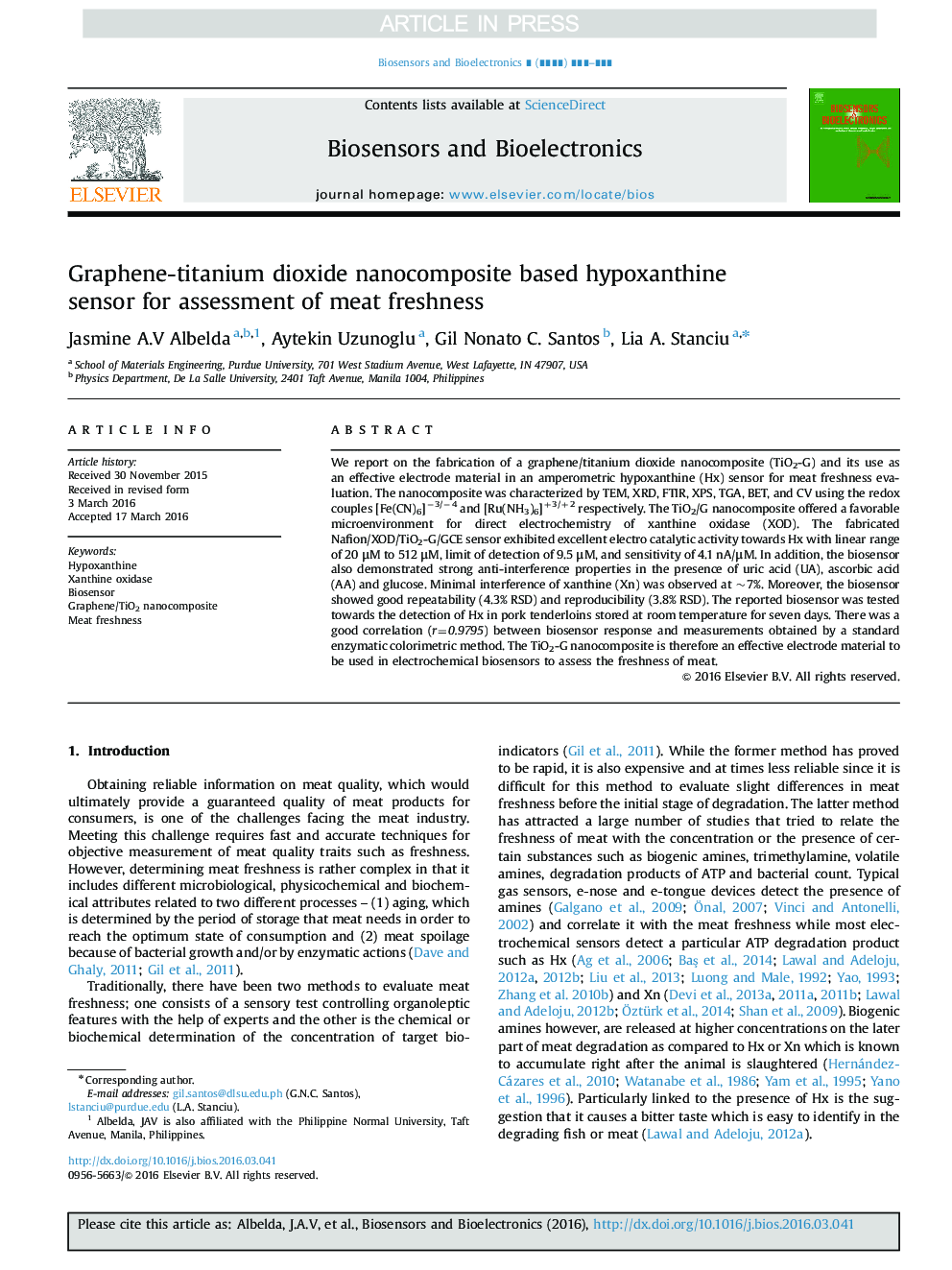| کد مقاله | کد نشریه | سال انتشار | مقاله انگلیسی | نسخه تمام متن |
|---|---|---|---|---|
| 5031716 | 1369954 | 2017 | 7 صفحه PDF | دانلود رایگان |
عنوان انگلیسی مقاله ISI
Graphene-titanium dioxide nanocomposite based hypoxanthine sensor for assessment of meat freshness
ترجمه فارسی عنوان
سنسور هیپوکسانتیون مبتنی بر نانوکامپوزیت دی اکسید گرافن برای ارزیابی طراوت گوشت
دانلود مقاله + سفارش ترجمه
دانلود مقاله ISI انگلیسی
رایگان برای ایرانیان
کلمات کلیدی
موضوعات مرتبط
مهندسی و علوم پایه
شیمی
شیمی آنالیزی یا شیمی تجزیه
چکیده انگلیسی
We report on the fabrication of a graphene/titanium dioxide nanocomposite (TiO2-G) and its use as an effective electrode material in an amperometric hypoxanthine (Hx) sensor for meat freshness evaluation. The nanocomposite was characterized by TEM, XRD, FTIR, XPS, TGA, BET, and CV using the redox couples [Fe(CN)6]â3/â4 and [Ru(NH3)6]+3/+2 respectively. The TiO2/G nanocomposite offered a favorable microenvironment for direct electrochemistry of xanthine oxidase (XOD). The fabricated Nafion/XOD/TiO2-G/GCE sensor exhibited excellent electro catalytic activity towards Hx with linear range of 20 μM to 512 μM, limit of detection of 9.5 μM, and sensitivity of 4.1 nA/μM. In addition, the biosensor also demonstrated strong anti-interference properties in the presence of uric acid (UA), ascorbic acid (AA) and glucose. Minimal interference of xanthine (Xn) was observed at ~7%. Moreover, the biosensor showed good repeatability (4.3% RSD) and reproducibility (3.8% RSD). The reported biosensor was tested towards the detection of Hx in pork tenderloins stored at room temperature for seven days. There was a good correlation (r=0.9795) between biosensor response and measurements obtained by a standard enzymatic colorimetric method. The TiO2-G nanocomposite is therefore an effective electrode material to be used in electrochemical biosensors to assess the freshness of meat.
ناشر
Database: Elsevier - ScienceDirect (ساینس دایرکت)
Journal: Biosensors and Bioelectronics - Volume 89, Part 1, 15 March 2017, Pages 518-524
Journal: Biosensors and Bioelectronics - Volume 89, Part 1, 15 March 2017, Pages 518-524
نویسندگان
Jasmine A.V Albelda, Aytekin Uzunoglu, Gil Nonato C. Santos, Lia A. Stanciu,
